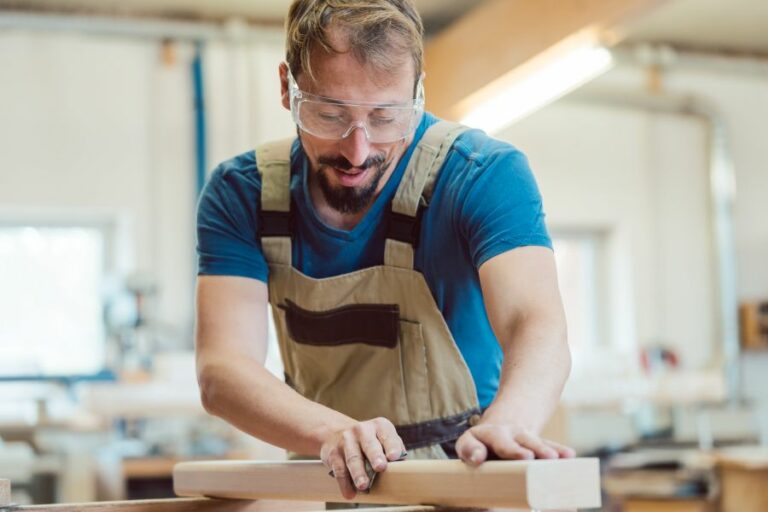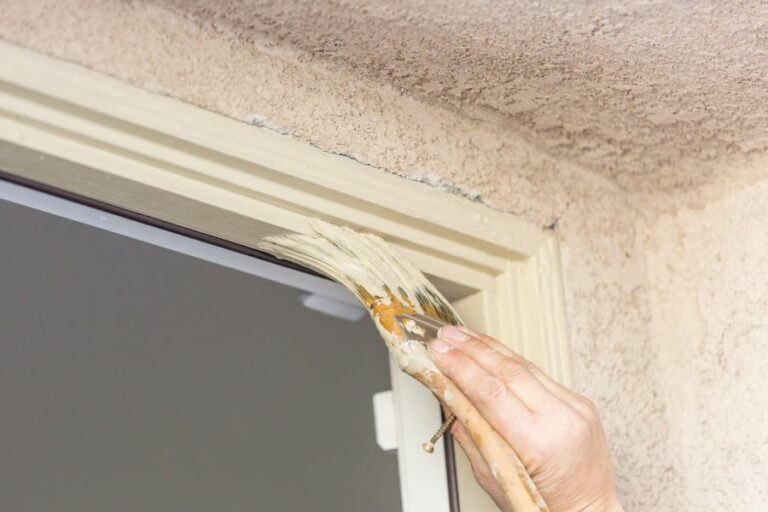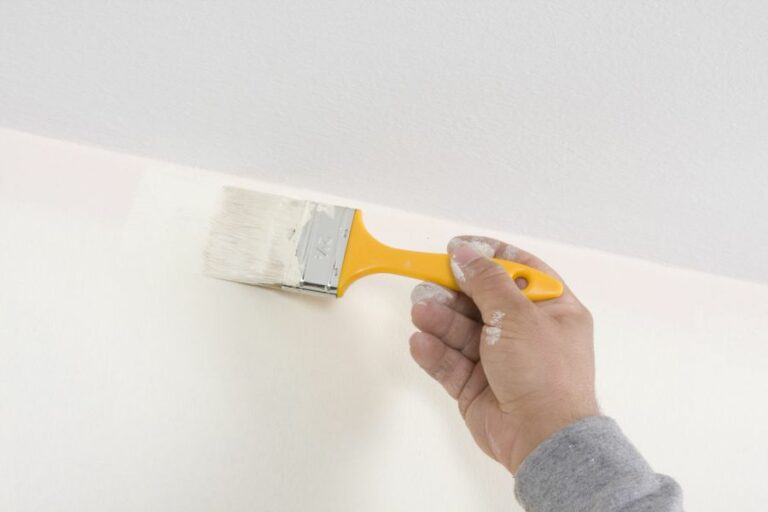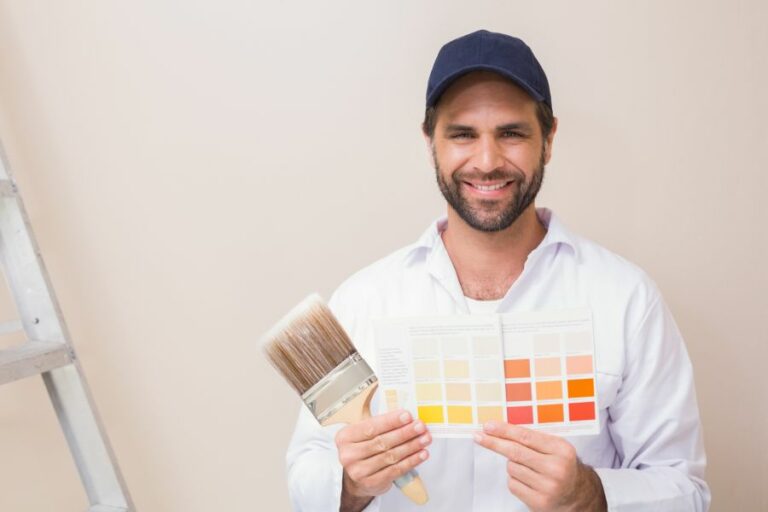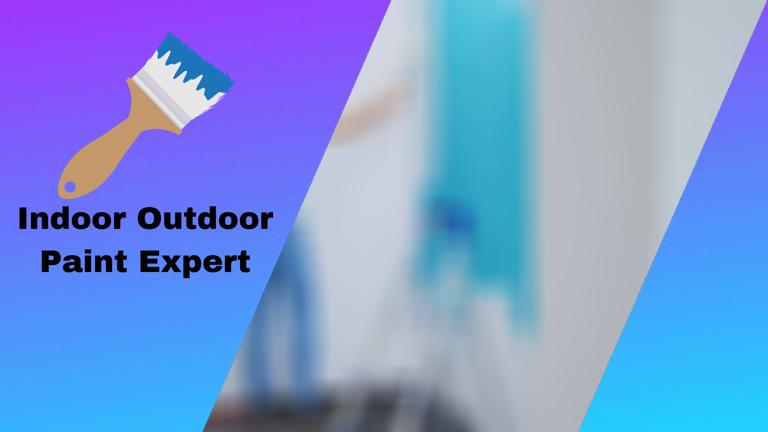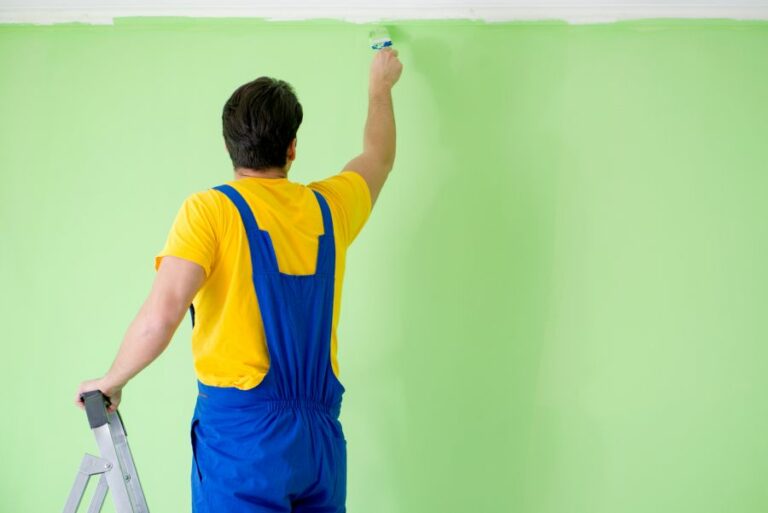Surface Profiling Techniques For Better Paint Stick
Are you on the lookout for methods to improve paint adherence on various surfaces? Look no further! We’ve got you covered with tried and tested surface profiling techniques that will significantly enhance the bonding strength between the paint and the surface in question. Our expertise and experience in this field can save you time, effort, and resources while delivering a more professional, long-lasting finish.
Surface profiling techniques for better paint stick:
Surface profiling techniques for better paint adhesion include mechanical methods like abrasive blasting and grinding, chemical treatments such as acid etching and solvent wiping, and thermal treatments like flame and plasma treatments. Each method has its advantages and disadvantages, and the choice depends on the material, application, and desired surface profile.
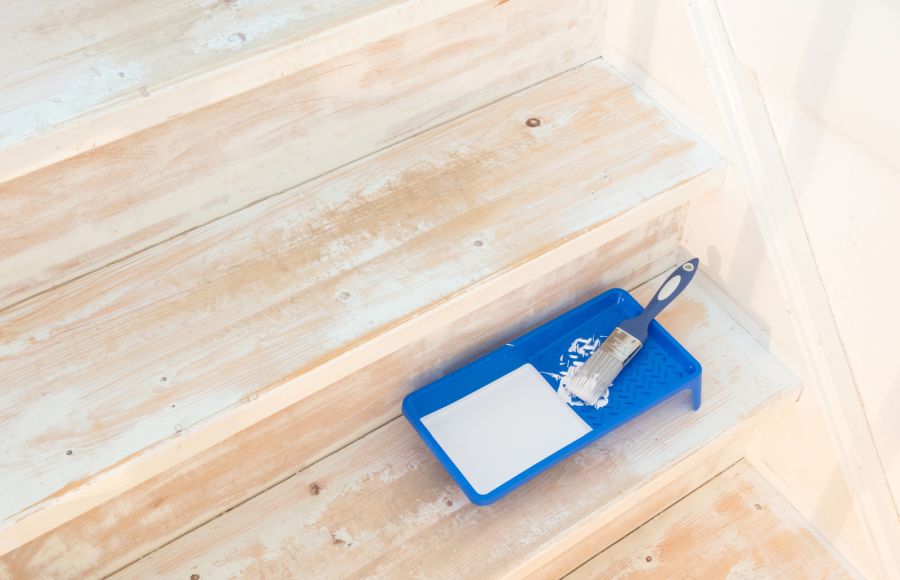
Discover more about the latest surface profiling methods that ensure improved paint adhesion, enhancing product appearance and durability.
Dive into the advantages and applications of these techniques, and learn how they can significantly transform your painting process. Read on and unlock the secret to a better paint stick!
Contents
- 1 Enhanced Paint Adhesion with Surface Profiling Strategies
- 2 Top Techniques for Effective Surface Preparation
- 3 Measuring Surface Profile: Key Methods Explained
- 4 Surface Profile Analysis: Understanding the Replica Tape Method
- 5 ASTM D4417 Method C: Defining the Standard
Enhanced Paint Adhesion with Surface Profiling Strategies
Proper surface profiling is crucial for ensuring optimal paint adhesion. Let’s discuss the most effective surface profiling techniques widely used to achieve better paint sticks. These methods include mechanical treatments, chemical treatments, and thermal treatments.
Let’s also discuss the advantages and disadvantages of each technique to help you choose the most suitable method for your application.
• Mechanical Surface Profiling Techniques
Mechanical profiling techniques involve physically altering the surface to promote paint adhesion. Here, we explore some of the common methods used in the industry:
– Abrasive Blasting
Abrasive blasting is a popular surface profiling method that involves projecting a high-pressure stream of abrasive particles against the target surface. This process effectively removes surface contaminants and creates a rough texture, which allows for better paint adhesion.
Pros
- Efficient at removing contaminants
- Creates a suitable surface profile for painting
- Can be used for various surfaces
Cons
- Can be harmful to the environment
- May cause surface damage when used inappropriately
- Requires specialized equipment and trained personnel
– Grinding
Grinding is another widely utilized mechanical profiling technique that utilizes abrasive tools to remove surface contaminants and texture the surface. There are numerous types of grinding techniques, including angle grinding, belt grinding, and disk grinding.
Pros
- Effective for small, localized areas
- Can create various surface profiles
- Relatively low cost
Cons
- May not be suitable for large-scale projects
- Can cause surface damage if not executed properly
• Chemical Surface Profiling Techniques
Chemical profiling techniques involve the use of chemical solutions to etch or texture the surface, enhancing paint adherence. Some common chemical treatments are:
– Acid Etching
Acid etching treats surfaces using acidic chemicals to remove contaminants and modify surface topology. Examples of acids used for etching include hydrochloric, sulfuric, and phosphoric acids.
Pros
- Effective for various surface materials
- Can create specific surface profiles
- Cost-effective when applied appropriately
Cons
- Potentially hazardous, requiring proper handling and disposal
- Can result in surface damage if utilized inadequately
– Solvent Wiping
Solvent wiping is another chemical profiling method that involves using solvents to remove grease, oil, and other contaminants from the surface. This priming process may include the use of acetone, alcohol, or other specialized solvents.
Pros
- Effective for clean surface preparation
- Easy to implement and cost-effective
Cons
- May not create a suitable surface profile for optimal paint adherence
- Solvents can be hazardous, necessitating careful handling and disposal
• Thermal Surface Profiling Techniques
Thermal treatments involve exposing surfaces to varying temperatures to promote better paint adhesion. These techniques include:
– Flame Treatment
The flame treatment utilizes a high-temperature flame to alter the surface’s chemical composition, improving paint adherence. This method is commonly applied to plastics, metals, and glass surfaces.
Pros
- Efficient adhesion on various materials
- Can create unique surface profiles
Cons
- Potential safety hazards during the process
- Requires specialized equipment and trained personnel
– Plasma Treatment
Plasma treatment is an advanced surface treatment technique that involves using high-temperature, ionized gas to modify the target surface. This process works on diverse surfaces, creating a stable bond for the paint.
Pros
- Effective on various materials
- Environmentally friendly and energy-efficient
- Can create a wide range of surface profiles
Cons
- Requires expensive and specialized equipment
- May need skilled personnel for operation
In conclusion, surface profiling is an essential process for successful paint adhesion. The choice of technique should be based on factors such as material type, application, and desired surface profile.
Mechanical, chemical, and thermal methods offer distinct advantages and disadvantages. However, my personal recommendation is to consider the specific requirements of your project and choose the most suitable technique accordingly.
Top Techniques for Effective Surface Preparation
Surface preparation is a crucial step in various industries, including painting, coating, bonding, and concrete repair. Proper surface preparation ensures that the applied material adheres correctly, improving its durability and performance.
• Mechanical Techniques
– Abrasive Blasting
Abrasive blasting, also known as sandblasting or grit blasting, is a popular method for removing paint, rust, and contaminants from various surfaces. This technique uses high-pressure compressed air to propel abrasive particles toward the surface, effectively removing surface impurities.
Some common abrasive materials used for blasting include sand, glass beads, and steel grit. Abrasive blasting is most suitable for large surfaces and metal substrates.
– Grinding
Grinding is another common technique for surface preparation. This method uses abrasive wheels or discs to remove unwanted materials, smoothen the surface, or create a specific surface profile.
Grinders come in different types, such as angle grinders, bench grinders, and floor grinders, depending on the surface and intended application. For best results, choose the appropriate grinding wheel or disc for the specific material being prepared.
– Shot Blasting
Shot blasting is similar to abrasive blasting, but it uses a mechanical method to propel steel shot or grit onto the surface. This high-velocity impact efficiently cleans the substrate and creates an even surface profile, making it an ideal preparation technique for concrete floors and industrial coatings.
In general, shot blasting provides a dust-free and environmentally friendly way of surface preparation. For more information on shot blasting and its applications, visit the Society for Protective Coatings (SSPC).
– Scarifying
Scarifying involves using a rotary machine equipped with sharp cutting teeth to remove stubborn coatings, old paint, and residues.
This technique is highly effective in preparing concrete surfaces and removing floor markings, creating a roughened texture that promotes better adhesion of coatings or overlays.
While scarifying is very efficient, it creates a significant amount of dust and should be used with adequate dust control measures.
• Chemical Techniques
– Acid Etching
Acid etching is a chemical technique used mainly for preparing concrete surfaces. This method involves applying a diluted solution of muriatic acid or phosphoric acid, which reacts with the concrete to create a roughened texture.
Acid etching is recommended for small-scale projects and interior applications, as it requires minimal equipment and can be easily controlled.
However, it may not provide the desired surface profile for heavy-duty coatings or overlays, and proper safety precautions need to be taken while working with acids.
– Solvent Cleaning
Solvent cleaning is quite simple and involves using a chemical cleaner or degreaser to remove contaminants like oil, grease, and dirt from the surface. This method is often used as a preliminary step before other surface preparation techniques, ensuring a clean substrate for better adhesion.
It is crucial to choose the right solvent for the specific material and contaminants and always follow the manufacturer’s recommendations for safe handling and disposal.
• Thermal Techniques
– Flame Cleaning
Flame cleaning is a thermal technique used for preparing steel surfaces. It involves heating the surface with a propane or oxyacetylene torch to burn off rust, mill scale, and other contaminants.
The heat causes the impurities to expand and break away from the base metal, while a wire brush is used to remove the loose residues. Flame cleaning requires proper safety gear and ventilation, as it can generate harmful fumes and sparks.
– Heat Bonding
Heat bonding is another thermal method that can be used for surface preparation, especially in the automotive and aerospace industries. This process involves applying heat to the substrate and the adhesive material to facilitate stronger adhesion between the two.
Heat bonding is ideal for joining materials with varying thermal expansion rates and can be used with most thermoplastic-based adhesives.
• Conclusion
Surface preparation techniques play a crucial role in the success of any painting, coating, or bonding project. Selecting the right method, based on factors such as surface type, size, application, and safety concerns, is essential for achieving optimal results.
This guide introduces you to the most common techniques, providing expert recommendations that can help you choose the best approach for your specific project.
Always follow the best industry practices and safety guidelines while carrying out surface preparation work, and consult expert resources like the Society for Protective Coatings (SSPC) for additional guidance.
| Most Common Surface Preparation Techniques |
|---|
| Cleaning |
| Deburring |
| Roughening |
| Etching |
| Grinding |
| Polishing |
| Blasting |
| Chemical stripping |
Measuring Surface Profile: Key Methods Explained
Surface profile refers to the measurement of the roughness or texture of a surface. It plays a crucial role in various industries, including manufacturing, automotive, aerospace, and construction.
Accurate surface profile measurement ensures a high-quality finish and promotes optimal performance across various applications.
• Contact Profilometry
Contact profilometry, also known as stylus profilometry, involves a stylus or probe that physically touches the surface being measured. It then records the profile by tracing the surface’s peaks and valleys. There are two primary variations of this method: skid and skidless profilometry.
– Skid Profilometry
In skid profilometry, the stylus moves along the surface while attached to a skid, which helps maintain a consistent distance from the surface. This method is ideal for less complex surfaces, as it can provide accurate roughness measurements.
However, it may not be well-suited for measuring more intricate surface profiles, as the skid’s contact with the surface can cause false readings.
– Skidless Profilometry
Skidless profilometry overcomes the limitations of the skid-based approach by not relying on a skid to maintain the probe’s position. This allows for more detailed measurements of intricate surface profiles without the risk of false readings.
As a result, it is more suitable for applications requiring highly accurate surface profile measurements or those with complex topographies.
• Optical Techniques
Optical techniques utilize light to measure surface profiles without making physical contact.
These methods offer various advantages, including their non-contact nature, which reduces the risk of surface damage, and their ability to analyze large areas rapidly, making them well-suited for in-line process control.
– Confocal Microscopy
Confocal microscopy employs a focused light beam to scan the surface. By positioning the focus at different heights, it creates a series of images that can be analyzed to produce a detailed surface profile.
This method is ideal for analyzing small and fragile surfaces, as well as those with low reflectivity.
– White Light Interferometry
White light interferometry, also known as coherence scanning interferometry, uses a spectrally broad light beam to illuminate the sample. The reflected light then interferes with a reference beam, and the resulting interference pattern is captured to produce a surface profile.
This technique is ideal for smooth and reflective surfaces, and it can achieve sub-nanometer resolution.
– Focus Variation
Focus variation combines microscopy and white light interferometry by utilizing a focused light beam to scan the surface. It creates a series of images at different focus planes, which are then analyzed to generate a depth map of the surface.
This method is well-suited for analyzing rough and textured surfaces, including those with steep slopes, where other optical techniques may struggle.
• 3D Imaging Methods
3D imaging methods involve capturing a 3D representation of the surface profile, typically through laser-based techniques or stereo imaging. These techniques are well-suited for large surface areas or intricate surface profiles.
– Laser Scanning Confocal Microscopy
Laser scanning confocal microscopy (LSCM) uses a laser beam to scan the surface and capture high-resolution images at multiple focal planes. A computer then processes these images to generate a detailed 3D representation of the surface profile.
This method is particularly useful for highly reflective, transparent, or complex surfaces that require a high level of detail.
– Stereo Imaging
Stereo imaging employs two cameras to capture images of the surface from different angles, creating a stereoscopic effect. By comparing these images, the system can generate a 3D point cloud, which represents the surface profile.
This method is ideal for large areas or complex geometries, as it allows for rapid data acquisition and analysis.
• Choosing the Right Method
Selecting the most suitable method for measuring surface profile depends on various factors, including the surface’s properties (e.g., roughness, reflectivity), the desired resolution, and the application’s specific requirements.
For example, contact profilometry may be preferable for applications requiring a simple, cost-effective solution, while optical techniques offer faster, non-contact alternatives, particularly helpful for fragile or reflective surfaces.
3D imaging methods may be best suited for large or intricate surface profiles, where capturing a high level of detail is crucial.
It is essential to understand the specific needs of your application to make an informed decision on which surface profile measurement method is most appropriate.
Consulting with an expert in the field or seeking advice from a reputable manufacturer can provide valuable guidance on selecting the most effective solution for your project.
Method | Description |
|---|---|
Stylus Instruments | Uses a stylus to trace the surface profile and record the vertical displacement. |
Optical Profilometry | Utilizes light reflections to measure surface profile, including interferometry and confocal microscopy. |
3D Laser Scanning | Employs a laser to capture the three-dimensional profile of a surface with high precision. |
X-ray Tomography | Uses X-rays to non-destructively measure the internal structure and surface profile of a material. |
Atomic Force Microscopy (AFM) | Measures surface profiles at nanometer scales by scanning a probe’s sharp tip over a sample’s surface. |
Surface Profile Analysis: Understanding the Replica Tape Method
The replica tape method, also known as the Testex Press-O-Film method, is a popular and widely used technique for determining the surface profile of various materials such as metals, concrete, and other surfaces.
This non-destructive method is beneficial for various industries, including protective coatings and marine sectors, where an accurate assessment of surface profile is critical for ensuring the longevity and performance of anti-corrosive paint systems.
• Significance of Surface Profile Measurement
Surface profile is a critical parameter that plays a vital role in the adhesion and performance of protective coatings on substrates exposed to harsh environments such as offshore structures, pipelines, and bridges.
By determining the surface profile accurately, one can ensure optimal adhesion between the paint system and the substrate, resulting in extended service life and reduced maintenance costs.
Additionally, surface profile measurement is indispensable in quality control during surface preparation processes such as abrasive blasting, as well as evaluating the effectiveness of post-coating operations, corrosion assessment, and more.
• Working Principle of the Replica Tape Method
The replica tape method is based on the principle of using tape to replicate the topography of a surface, which is then measured to reveal the surface’s profile.
The process involves the following steps:
- Selection of appropriate replica tape: Two types of tapes are available coarse and X-coarse, where each grade is designed to measure a specific range of surface roughness.
- Applying the tape to the target surface: The tape is applied to the surface by pressing it with a burnishing tool to ensure the tape conforms to the surface’s peaks and valleys.
- Removing the tape: After the tape has been applied thoroughly, it is gently removed from the surface, retaining the surface’s replica on the tape.
- Measuring the replica tape: The tape thickness is then measured using a micrometer or a spring micrometer, which includes a reference value that subtracts the tape’s intrinsic thickness to obtain the surface profile measurement.
• Advantages of the Replica Tape Method
The replica tape method boasts several advantages over other surface profile measurement techniques, including:
- Non-destructive: As the method only involves the usage of tape being applied and removed from the surface, it does not damage or alter the surface’s condition.
- Ease of use: The replica tape method is relatively simple to learn and execute, requiring minimal training and experience.
- Rapid and accurate results: The method quickly provides accurate and repeatable surface profile measurements, making it a viable option for both in-situ and laboratory applications.
- Versatility: The method can be used on a plethora of materials and surfaces, such as metals, concrete, and more, with various surface conditions and profiles.
- Portability: The equipment required for replica tape measurements, such as tapes, burnishing tools, and micrometers, is compact and highly portable, making it suitable for use in remote locations or confined spaces.
• Limitations of the Replica Tape Method
Despite its numerous benefits, the replica tape method also has a few limitations, which include:
- Limited measurement range: The available tapes only cater to a specific range of surface roughness, which may not be suitable for very fine or extremely rough surfaces.
- Inability to capture all surface features: The replica tape method may not accurately reproduce some surface attributes, such as sharp peaks or deep valleys.
- Sensitivity to operator technique: The method’s accuracy and repeatability can be affected by variations in the way operators apply and measure the tape.
- One-time-use tapes: The tapes used in this method are single-use, which may lead to increased overall testing costs.
Despite these limitations, the replica tape method remains a viable and widely adopted technique for measuring surface profiles, especially in industries that value the accuracy and simplicity it offers.
For more information about the application of the replica tape method, the National Association of Corrosion Engineers (NACE) provides an extensive resource library that can further aid your understanding of this technique.
• Conclusion
The replica tape method for surface profile determination is an essential tool in various industries to ensure the quality and longevity of protective coatings, as well as other processes that require precise surface profile measurements.
With its non-destructive, easy-to-use, and accurate nature, the method undoubtedly offers a valuable solution to professionals aiming to effectively inspect and maintain their assets.
ASTM D4417 Method C: Defining the Standard
• Introduction to ASTM D4417
ASTM D4417 is a standard developed by the American Society for Testing and Materials (ASTM). This standard is specifically designed for measuring the surface profile of a substrate in industrial coatings and linings.
The purpose of this measurement is to determine the surface’s preparedness for coating or lining application. Accurate surface profile measurement helps ensure proper adhesion between the coating and the substrate, and it is an essential step in preventing coating failure.
ASTM D4417 consists of three different methods for measuring surface profiles A, B, and C. Let’s focus on Method C, explaining its process, benefits, and applications.
• ASTM D4417 Method C: Replica Tape Method
Method C, also known as the Replica Tape Method, involves using a specialized tape to create a surface replica. This tape consists of a compressible foam and a non-compressible incompressible backing.
When the tape is applied to a surface, the foam conforms to the surface profile, creating an impression or replica of the surface.
– Procedure for Using Replica Tape
- Cleaning the Surface: Before using replica tape, ensure the surface is clean and free of contaminants, dust, and loose particles. This will help provide an accurate representation of the surface profile.
- Selecting the Appropriate Replica Tape: There are two different types of replica tape X-coarse and Coarse. Choose the tape that corresponds to the surface profile’s expected range.
- Applying the Tape: Position the tape so the foam side is in contact with the surface. Apply pressure using a burnishing tool or roller, ensuring the tape fully conforms to the surface’s contours.
- Removing the Tape: Carefully peel the tape off the surface without stretching or tearing it. This will leave an impression of the surface profile on the foam.
- Measuring the Surface Profile: Use a micrometer or depth micrometer to measure the thickness of the replica tape, including both the foam and backing layers. Subtract the thickness of the backing layer to determine the surface profile.
– Benefits of Using Method C
- Non-Destructive: Method C does not cause any damage to the surface, as it only requires the application of the replica tape.
- Easy to Use: Using replica tape is a simple process, making it easy for both experienced and novice personnel to utilize it effectively.
- Accurate and Repeatable: Replica tape provides reliable and repeatable results, making it a trustworthy measurement method.
- No Special Equipment Required: Other than the replica tape, no special equipment is needed for analysis, making it a cost-effective option for measuring surface profile.
• Applications of ASTM D4417 Method C
ASTM D4417 Method C is widely used in various industries to ensure proper coating and lining adhesion. Some of the primary applications include:
- Industrial Coatings: Measuring and validating the surface profile of substrates in industries such as shipbuilding, oil & gas, transportation, and power generation can help prevent coating failures and prolong the coating’s service life.
- Concrete Surface Preparation: Method C can be used to measure the surface profile of concrete substrates for different applications, such as bridge decks, parking garages, and wastewater treatment facilities.
- Galvanized Steel: In cases where galvanized steel surfaces need to be coated or lined, measuring the surface profile using replica tape ensures the proper adhesion of the coating material.
• Recommendations for ASTM D4417 Method C
Based on personal experience and industry standards, I recommend the following best practices for using ASTM D4417 Method C.
- Calibration: Regularly calibrate the micrometer or depth micrometer used for measuring the replica tape to ensure accuracy.
- Tape Storage: Store replica tapes in a cool, dry place away from direct sunlight, as exposure to heat and sunlight can degrade the tape’s foam and negatively impact results.
- Surface Cleanliness: Ensure the surface is thoroughly cleaned before applying replica tape, as any contaminants, dust, or debris can affect measurement accuracy.
- Multiple Measurements: To account for surface variations, take multiple measurements in different locations of the prepared surface. This will provide a more accurate representation of the overall surface profile.

